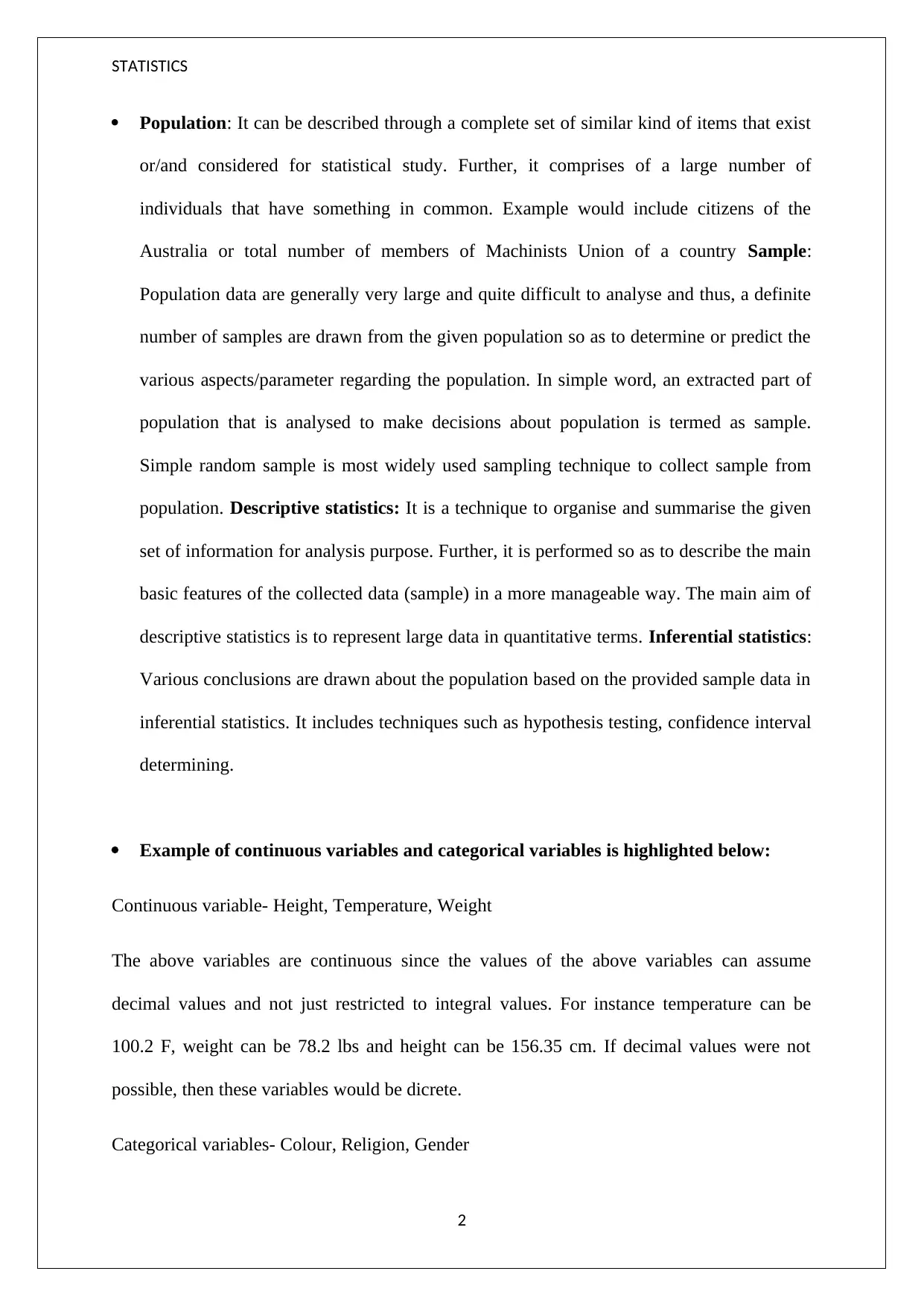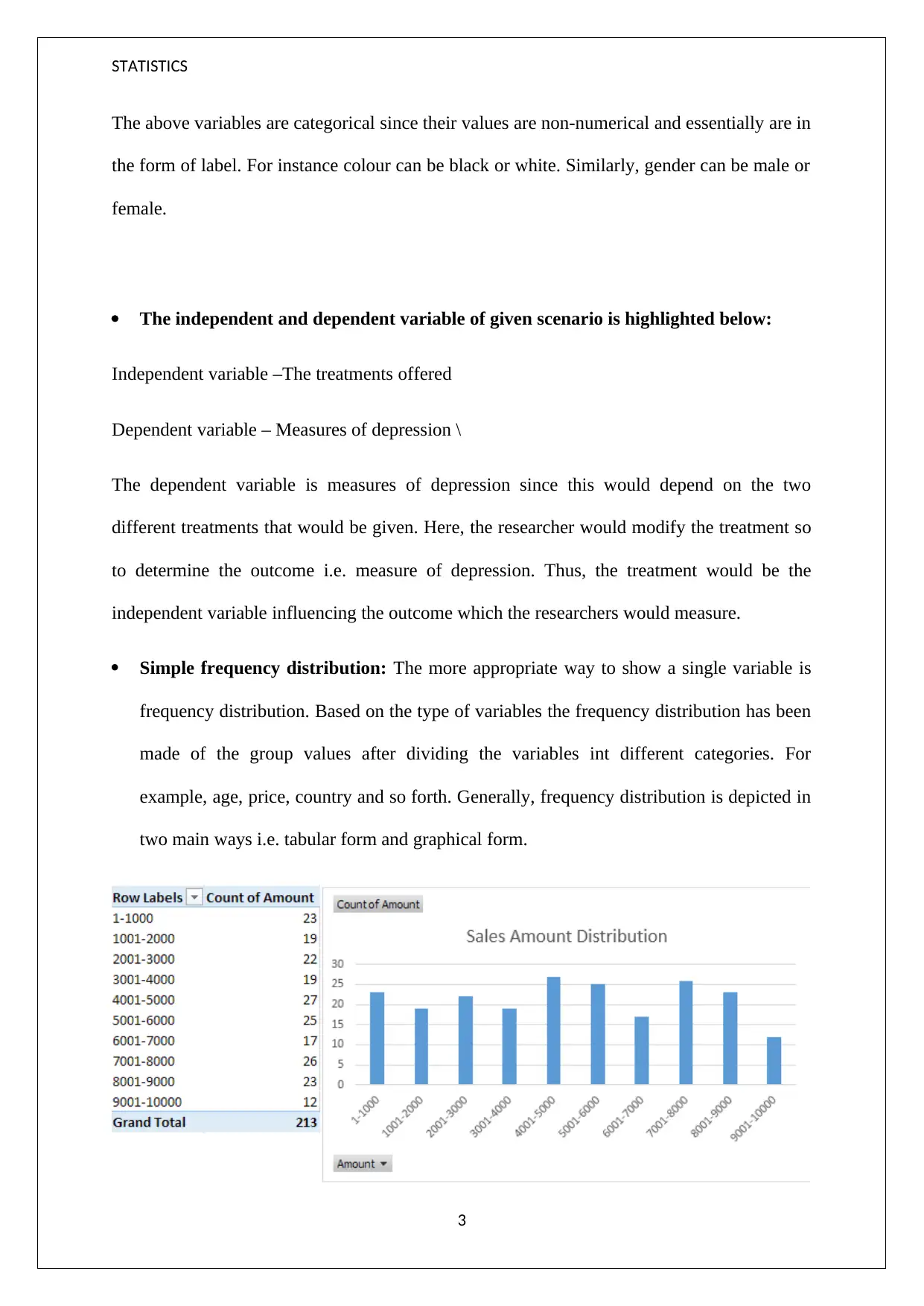Statistics Assignment: Descriptive, Inferential and Variables
VerifiedAdded on 2022/09/07
|3
|511
|17
Homework Assignment
AI Summary
This statistics assignment delves into key statistical concepts, including descriptive and inferential statistics. It explains the difference between population and sample, and how a sample is used to make inferences about the population. The assignment explores the types of variables, distinguishing between continuous and categorical variables, with examples of each. It then examines independent and dependent variables within a given scenario. The assignment also briefly discusses the importance of frequency distribution, and how it is used to display the values of a single variable. This is a great resource for students looking to understand the fundamentals of statistical analysis.
1 out of 3









![[object Object]](/_next/static/media/star-bottom.7253800d.svg)